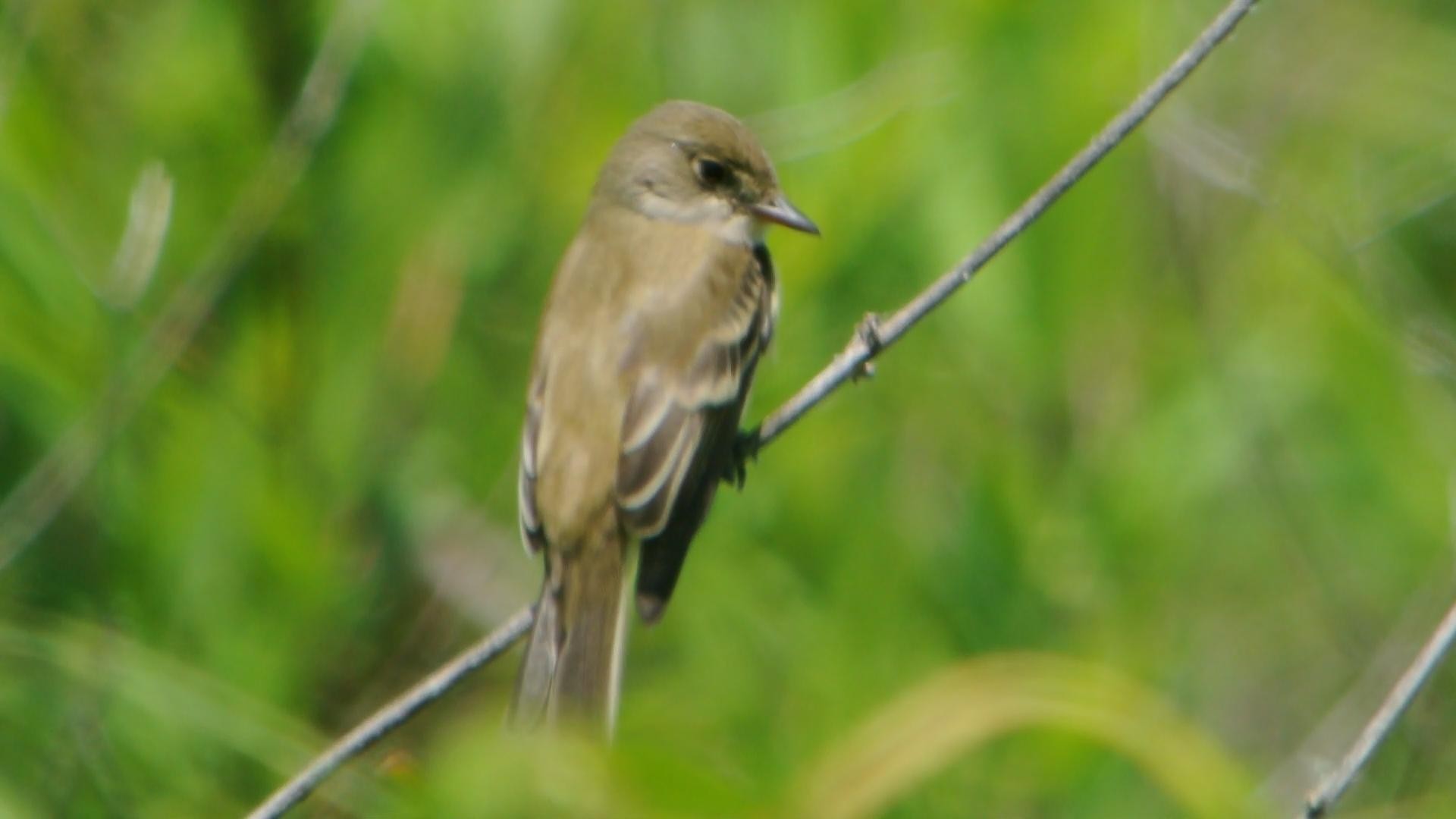Willow Flycatcher
A species of Empidonax flycatchers Scientific name : Empidonax traillii Genus : Empidonax flycatchers
Willow Flycatcher, A species of Empidonax flycatchers
Botanical name: Empidonax traillii
Genus: Empidonax flycatchers
Content
Description General Info
 Photo By Andy Reago & Chrissy McClarren , used under CC-BY-2.0 /Cropped and compressed from original
Photo By Andy Reago & Chrissy McClarren , used under CC-BY-2.0 /Cropped and compressed from original Description
Adults have brown-olive upperparts, darker on the wings and tail, with whitish underparts; they have an indistinct white eye ring, white wing bars and a small bill. The breast is washed with olive-gray. The upper part of the bill is gray; the lower part is orangish. At one time, this bird and the alder flycatcher (Empidonax alnorum) were considered to be a single species, Traill's flycatcher. The willow and alder flycatchers were considered the same species until the 1970s. Their song is the only reliable method to tell them apart in the field . Their breeding habitat is deciduous thickets, especially willows and often near water, across the United States and southern Canada. They make a cup nest in a vertical fork in a shrub or tree. These neotropical birds migrate to Mexico and Central America, and in small numbers as far south as Ecuador in South America, often selecting winter habitat near water. Willow flycatchers travel approximately 1,500–8,000 km (930–4,970 mi) each way between wintering and breeding areas. They wait on a perch near the top of a shrub and fly out to catch insects in flight, also sometimes picking insects from foliage while hovering. They may eat some berries. This bird's song is a sneezed fitz-bew. The call is a dry whit. This bird competes for habitat with the alder flycatcher where their ranges overlap. 
Size
15 cm (5.75 in)
Colors
Brown
Black
Bronze
Gray
White
Life Expectancy
11 years
Nest Placement
Shrub
Clutch Size
3 - 5 eggs
Feeding Habits
Willow Flycatcher mainly consumes flying insects caught midair or gleaned from foliage during hover-feeding. They eat bees, wasps, ants, beetles, damselflies, butterflies, moths, flies, and Syritta pipiens. Occasionally, they feed on berries like blackberries and raspberries in fall.
Habitat
Willow Flycatcher are typically associated with a variety of wet, shrubby areas including willow thickets, brushy fields, and upland copses near bodies of water. They favor environments with standing or running water but can also adapt to drier scrublands, especially in the Pacific Northwest. The preferred altitude ranges from sea level up to 8,000 feet, with the bird occupying diverse habitats such as shrubby clearings, pastures, and woodland edges during winter with a preference for areas close to water. Vegetation types encompass willows, shrubs, scrubby growth on river islands, and woodlands.
Nest Behavior
Willow Flycatcher females take 5–10 days for the initial nest and less for subsequent ones, using materials from failed nests to rebuild. Nesting involves securing a spot, constructing the nest, lining it, then egg-laying and parental care.
Nest Characteristics
Willow Flycatcher builds nests within low shrubs, often near edges, regularly in willow but also in various other plants, around 2–5 feet high. The nest consists of woven grasses and plant strips, anchored to the shrub, lined with rootlets or horsehair, and measures approximately 3 inches across and tall.
Dite type
Insectivorous
General Info
Feeding Habits
Bird food type
Bird Feeder Type

Platform
Behavior
Willow Flycatcher displays distinctive behaviors encapsulating its active insectivorous lifestyle. Typically, willow Flycatcher can be observed perching upright on shrubs, launching into the air to capture prey with swift, agile movements. Known for their characteristic song 'fitz-bew,' they also engage in unique territory and mating displays, including tail flicking, spread tail feathers, and wing-flicking, especially when faced with competition. Willow Flycatcher forms mostly monogamous pairings, although occasional polygamy occurs. Showing high site fidelity, willow Flycatcher often returns to previous territories or mates annually, underscoring their stable mating system and environmental adaptability.
Species Status
Not globally threatened.

 Photo By Andy Reago & Chrissy McClarren , used under CC-BY-2.0 /Cropped and compressed from original
Photo By Andy Reago & Chrissy McClarren , used under CC-BY-2.0 /Cropped and compressed from original Scientific Classification
Phylum
Chordates Class
Birds Order
Perching birds Family
Tyrant flycatchers Genus
Empidonax flycatchers Species
Willow Flycatcher